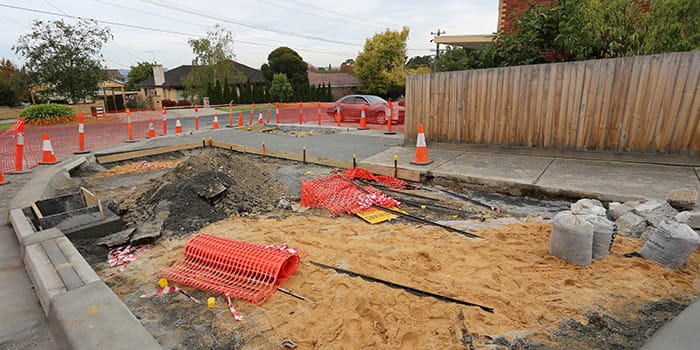Collaboration the key on water sensitive design project
Sixteen water sensitive urban design (WSUD) features are in the process of being constructed in a north-eastern Melbourne suburb as part of a collaborative project between Manningham Council, CRC for Water Sensitive Cities (CRCWSC), Melbourne Water and Monash Water for Liveability.
The successful Zero Additional Maintenance Water Sensitive Urban Design (ZAM-WSUD) project started as a pilot program 18 months ago with an initial plan for four installations to improve water retention and urban design in the Manningham Council area (as mentioned in a previous news item Zero additional maintenance WSUD project success).
CRCWSC’s involvement in the project was led by Dr Belinda Hatt with support from PhD candidate Veljko Prodanovic and Project Leader Professor Ana Deletic.

The project was linked to the Cities as Water Supply Catchments – Sustainable Technologies and Fit-for-purpose water production projects (Project C1.1 and C1.3).
Early in the process, the team tested various filter media in the laboratory to determine the best long-term, efficient method for a biofiltration system that would support the overlying plant community and contribute to filtration of pollutants.
Manningham City Council Project Engineer Simon Brink said the project had far exceeded expectations and its success was due to the collaborative efforts of a broad range of stakeholders to discuss and resolve issues early in the design process.
“The project successfully combined the latest research outcomes from the CRC for Water Sensitive Cities and Monash Water for Liveability with Council requirements for a low maintenance WSUD solution.”
“The next stage of the project is to monitor trial installations to assess whether designs meet Council requirements for a low maintenance WSUD solution, and to make any refinements necessary. Observations will be used to optimise designs prior to further installations planned for 2015 and for inclusion in the ZAM-WSUD handbook, currently under development,” Mr Brink said.